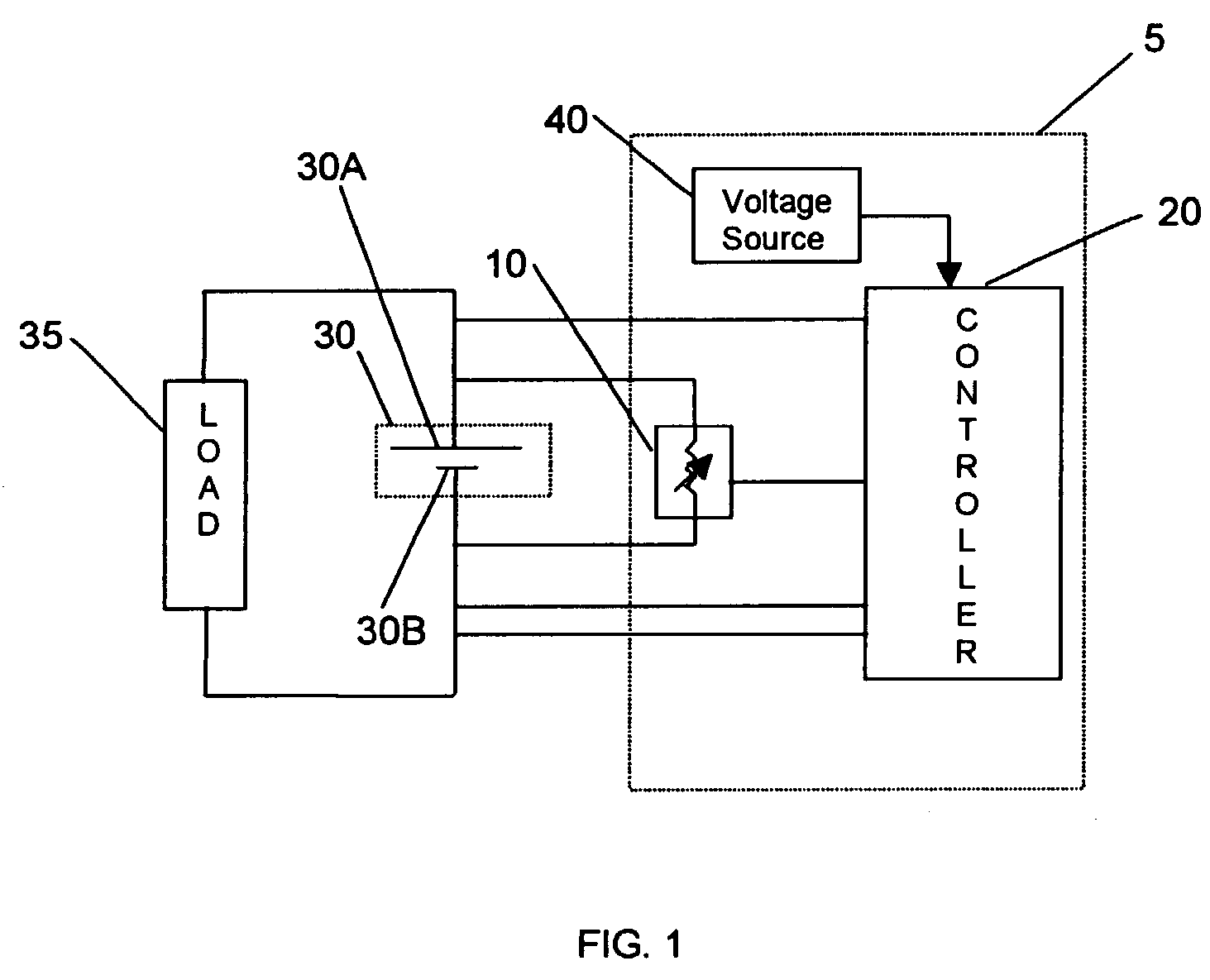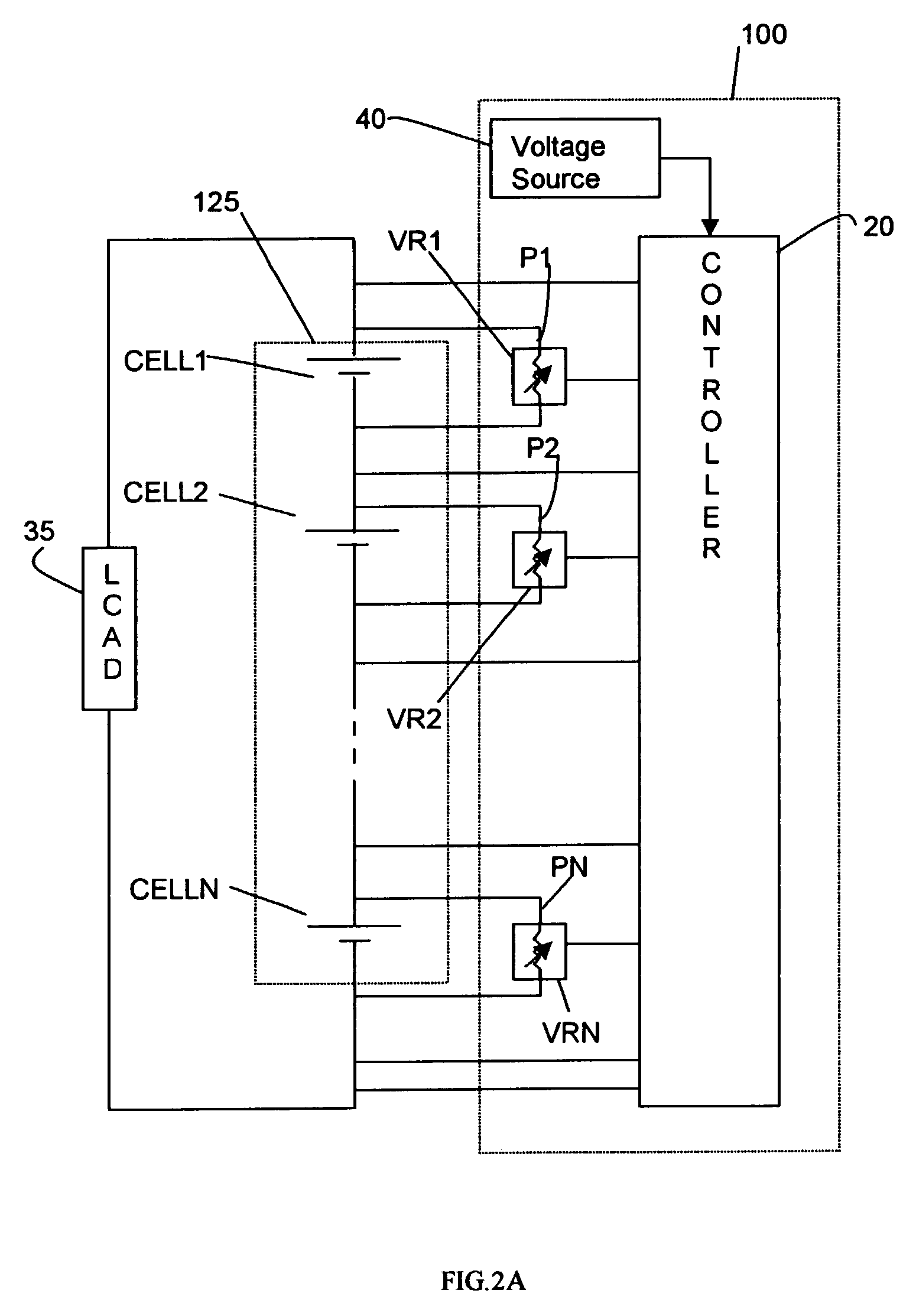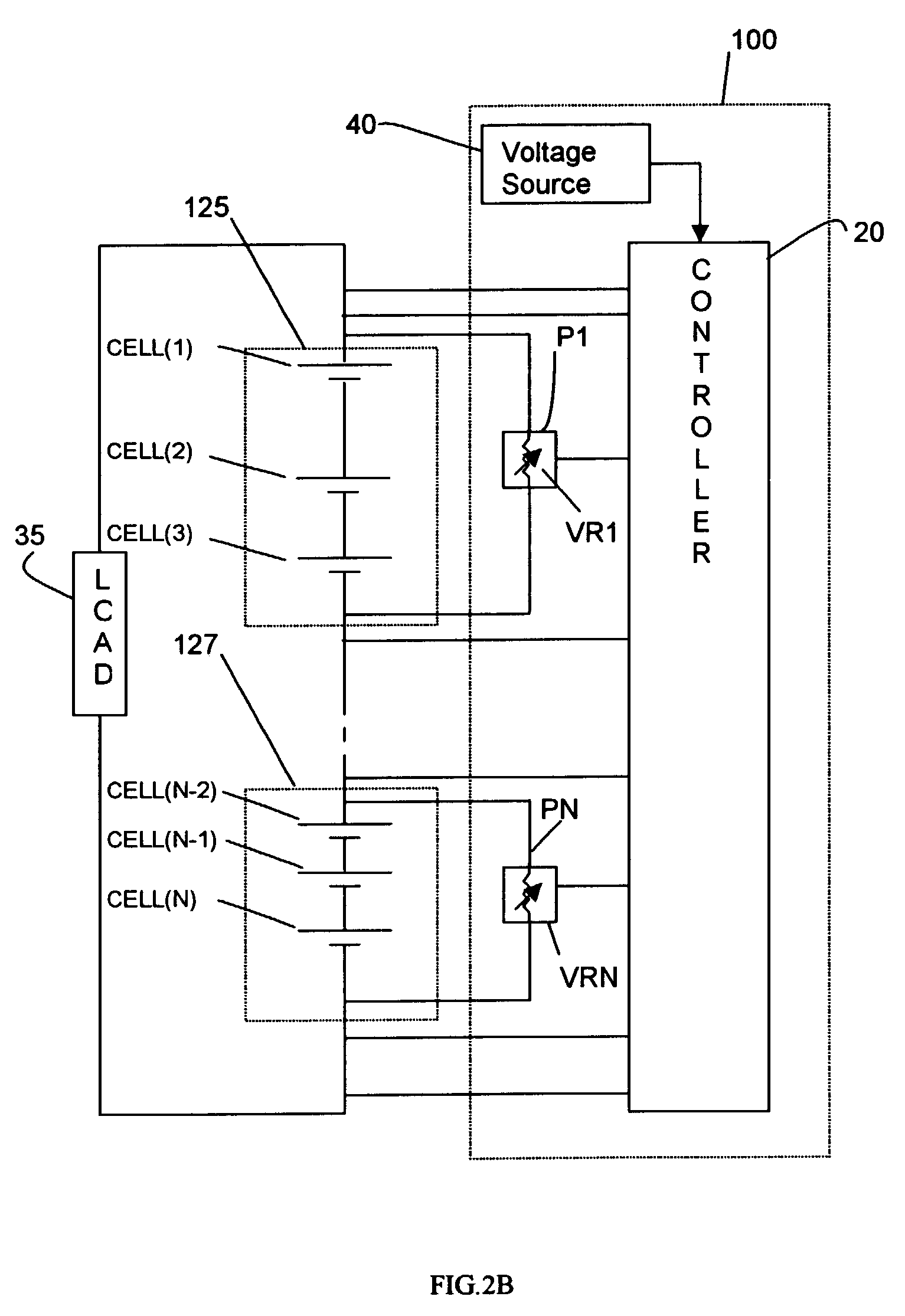Method and apparatus for rejuvenating fuel cells
a fuel cell and fuel cell technology, applied in the field of fuel cells, can solve the problems of reducing the overall reliability and life of the fuel cell stack, reducing the available energy from the cell, and cell failure, so as to reduce the effects of electrocatalyst poison on stack performance, reduce catalyst poison, and improve cell performan
- Summary
- Abstract
- Description
- Claims
- Application Information
AI Technical Summary
Benefits of technology
Problems solved by technology
Method used
Image
Examples
first embodiment
[0256]FIG. 1 is a block diagram of a fuel cell management system 5 according to the present invention. In this first embodiment, the management system 5 consists of a variable resistive means 10 and a controller 20 coupled to a single fuel cell 30. The fuel cell 30 may be connected to a load 35 to provide power to that load 35. The controller 20 is also connected to the variable resistive means 10 in order to control its resistive value. A power supply 40 is connected to the controller 20. The power supply 40 may be derived from any type of power supply, including direct current (DC) and alternating current supplies, or the fuel cell independently.
[0257]According to the present invention, the variable resistive means 10 is utilized to reduce the fuel cell voltage to a predefined threshold level for a finite period of time. The controller 20 measures a voltage level across the fuel cell 30. If this measurement is below the predefined threshold level, then cell poisoning is deemed to ...
third embodiment
[0266]FIG. 3 illustrates a block diagram of the fuel cell management system 150. In this embodiment, the fuel cell management system 150 utilizes a Metal-Oxide Semiconductor Field-Effect Transistor (MOSFET) 170, as a resistive means, and a controller 20, each of which are coupled to a single fuel cell 30. Both the drain 170D and the source 170S are coupled across the fuel cell 30. The controller 20 is connected to the gate 170G of the MOSFET 170 to control the variable resistive means of the MOSFET 170. The controller 20 derives power from a power supply 40.
[0267]As previously stated, reducing the voltage level across the fuel cell to a predefined threshold level for a finite period rejuvenates a fuel cell. In this embodiment, a MOSFET 170 is utilized to reduce the voltage across the fuel cell 30. The controller 20 measures a voltage level across the fuel cell 30 and determines if this measurement is below a predefined threshold level. If the voltage measured across the fuel cell is...
PUM
| Property | Measurement | Unit |
|---|---|---|
| operating voltages | aaaaa | aaaaa |
| voltage | aaaaa | aaaaa |
| voltage | aaaaa | aaaaa |
Abstract
Description
Claims
Application Information
 Login to View More
Login to View More - R&D
- Intellectual Property
- Life Sciences
- Materials
- Tech Scout
- Unparalleled Data Quality
- Higher Quality Content
- 60% Fewer Hallucinations
Browse by: Latest US Patents, China's latest patents, Technical Efficacy Thesaurus, Application Domain, Technology Topic, Popular Technical Reports.
© 2025 PatSnap. All rights reserved.Legal|Privacy policy|Modern Slavery Act Transparency Statement|Sitemap|About US| Contact US: help@patsnap.com



